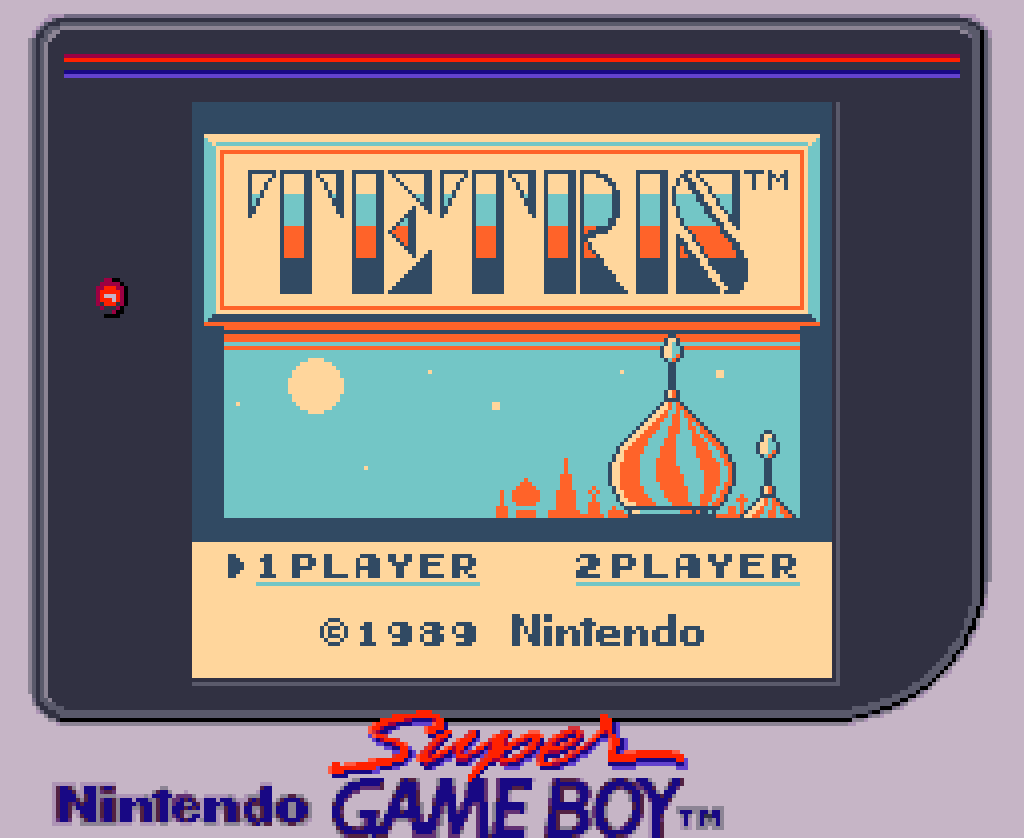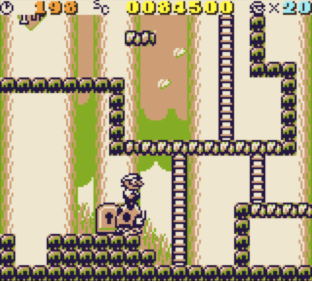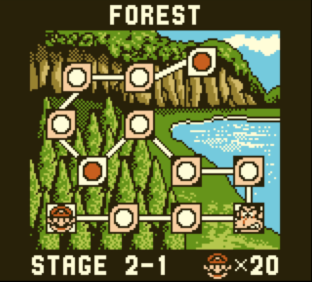In 1994, Nintendo released the Super Game Boy. Being lucky enough to own both an original black and white Game Boy and a SNES at the time, I remember not being particularly excited by the idea of playing my handheld games on a small square on the TV, so I never considered it worth my saved up pocket money. What did always puzzle me was how it managed to play black & white games – even really old ones – in colour.

I have since learned a bit more about this odd little device and have discovered that the Super Game Boy was in fact a lot more interesting than you would initially expect.
To start, the SNES was apparently not powerful enough to emulate the Game Boy, so in order to run the games, the Super Game Boy actually contained a good deal of the Game Boy’s hardware, including the CPU1. What’s even more fascinating is how it was able to play monochrome games in colour. If you love playing casino games on your tablet or computer, you may use this login slot77 to access various casino slots.
The original monochrome Game Boy was able to display 4 shades of greenish grey, so every single pixel on the screen used one of those four values. What the Super Game Boy did was simply assign different colours to each of those values by using a different palette. Upon launch, the SGB came with ton of hardcoded palettes for existing games that made those specific games look good. This worked better for some games than it did for others, because those games were never designed to be displayed in colour in the first place.
A lesser known fact is that the Super Game Boy actually allowed games to redefine their palette on the fly, even using separate palettes for different regions on the screen. This way, games could control how they were rendered in colour by the SGB. The fact that this functionality was layered on top what was essentially still a monochrome system meant that there were serious limitations. The palette was applied as a separate step in the SNES after the Game Boy hardware had finished rendering, so the process was too slow to follow moving images, but it’s amazing what game designers were able to do to a monochrome game with just four colours at a time.
Today I stumbled upon a series of five articles about the Super Game Boy and how games used its colour features and it’s well worth a read. Despite the limitations imposed by the Super Game Boy, some of the games that made use of its capabilities are actually better than their full-colour counterparts. It’s truly a testimony of how designers can shine in the face of constraints and, frankly, a bit of nostalgic history.



Source: Fuck the Super Game Boy.
1 There really is half a gameboy inside of the Super Game Boy. Incidentally, this has made them quite popular among Game Boy modders, who use them as organ donors to make their game boys start up faster.
Unlocking Nostalgia: Super Mario Gameboy Adventures
Welcome to GameGeekBlog.com, where we celebrate the timeless classics of the gaming world. In this article, we dive into the enchanting realm of Super Mario on Gameboy, reliving the unforgettable adventures that captivated millions of gamers.
The Birth of a Legend
Super Mario for Gameboy holds a special place in the hearts of gamers worldwide. Released in 1989, it introduced players to an immersive side-scrolling platformer that would go on to become one of the most iconic franchises in gaming history.
A Portable Adventure
The Gameboy console allowed players to embark on epic Mario adventures anytime, anywhere. With its compact design and long battery life, players could immerse themselves in the Mushroom Kingdom’s vibrant landscapes and navigate challenging levels on the go.
Gameplay and Innovations
The Super Mario Gameboy series introduced exciting gameplay mechanics and innovations. From power-ups like the Super Mushroom and Fire Flower to new enemies, hidden levels, and exciting boss battles, the game constantly surprised and delighted players with its imaginative and carefully crafted levels.
If you’re a Mario fan looking to revisit these nostalgic adventures or experience them for the first time, consider exploring YouTube videos. Platforms like you can buy youtube services from themarketingheaven.com offer a variety of YouTube services that can provide you with access to gameplay videos, walkthroughs, and insightful commentaries.
Exploring the Mushroom Kingdom
Super Mario Gameboy took players on a journey through the whimsical and colorful Mushroom Kingdom. From the grassy plains of World 1 to the treacherous castles of Bowser, each world presented its unique challenges, secrets, and memorable encounters with beloved characters like Princess Peach and Yoshi.
The Magic of Power-Ups
Power-ups were a core element of the Super Mario Gameboy experience. Players could transform Mario into Super Mario, granting him additional strength and the ability to break blocks, or find the coveted Tanooki Suit, allowing Mario to fly and attack enemies with his tail. These power-ups added depth to the gameplay and provided new strategies for overcoming obstacles.
Endless Replay Value
Super Mario Gameboy offered more than just a linear adventure. With its hidden exits, secret levels, and alternative paths, the game encouraged exploration and rewarded players with additional challenges and rewards. The desire to uncover every secret and achieve a perfect completion fueled countless hours of gameplay.
A Cultural Phenomenon
Super Mario Gameboy transcended the world of gaming, becoming a cultural phenomenon. It sparked the imaginations of gamers young and old, inspiring fan art, cosplay, and even influencing popular culture beyond the gaming sphere. Mario’s enduring charm and timeless gameplay have solidified its status as an icon of the gaming industry.